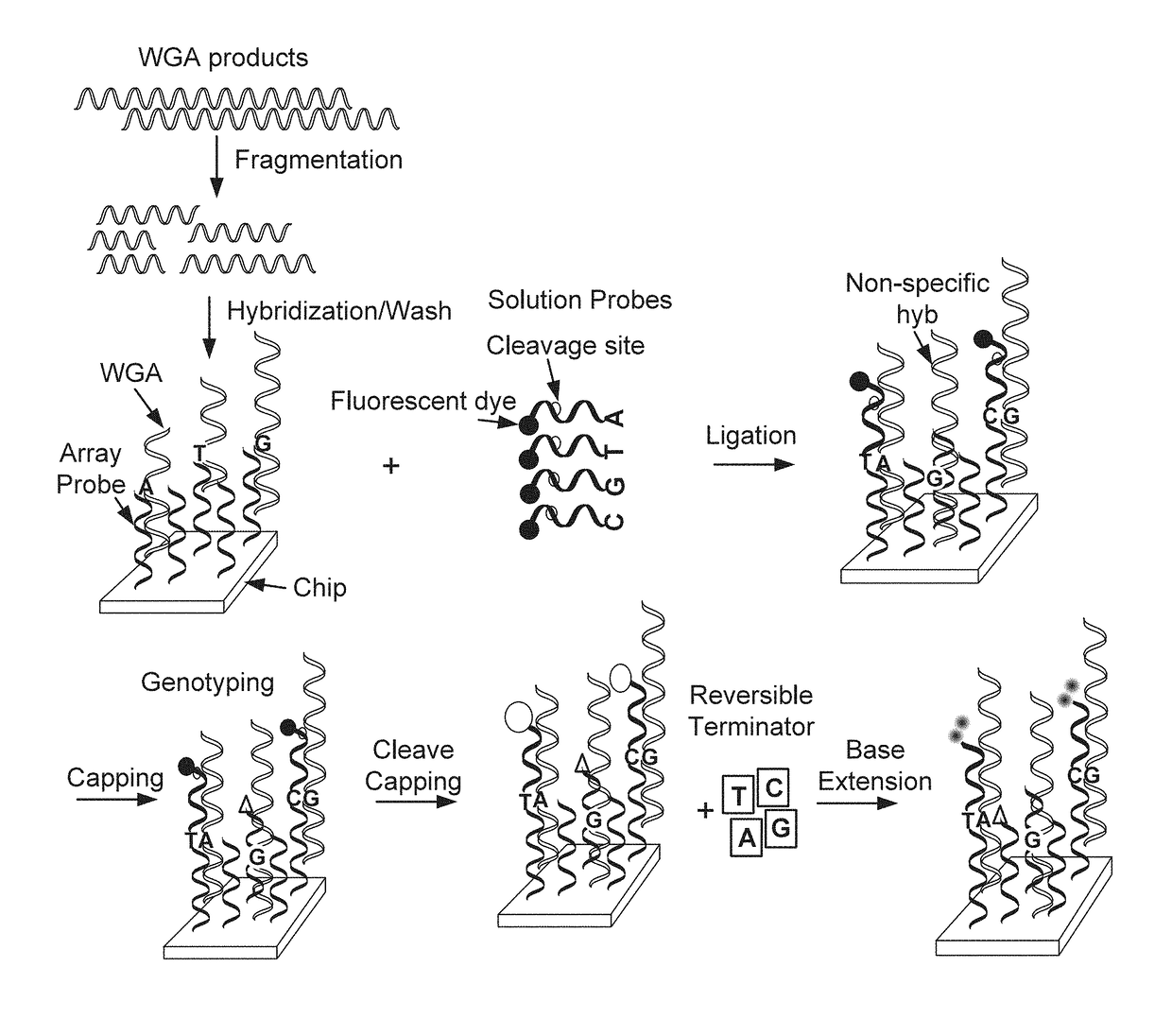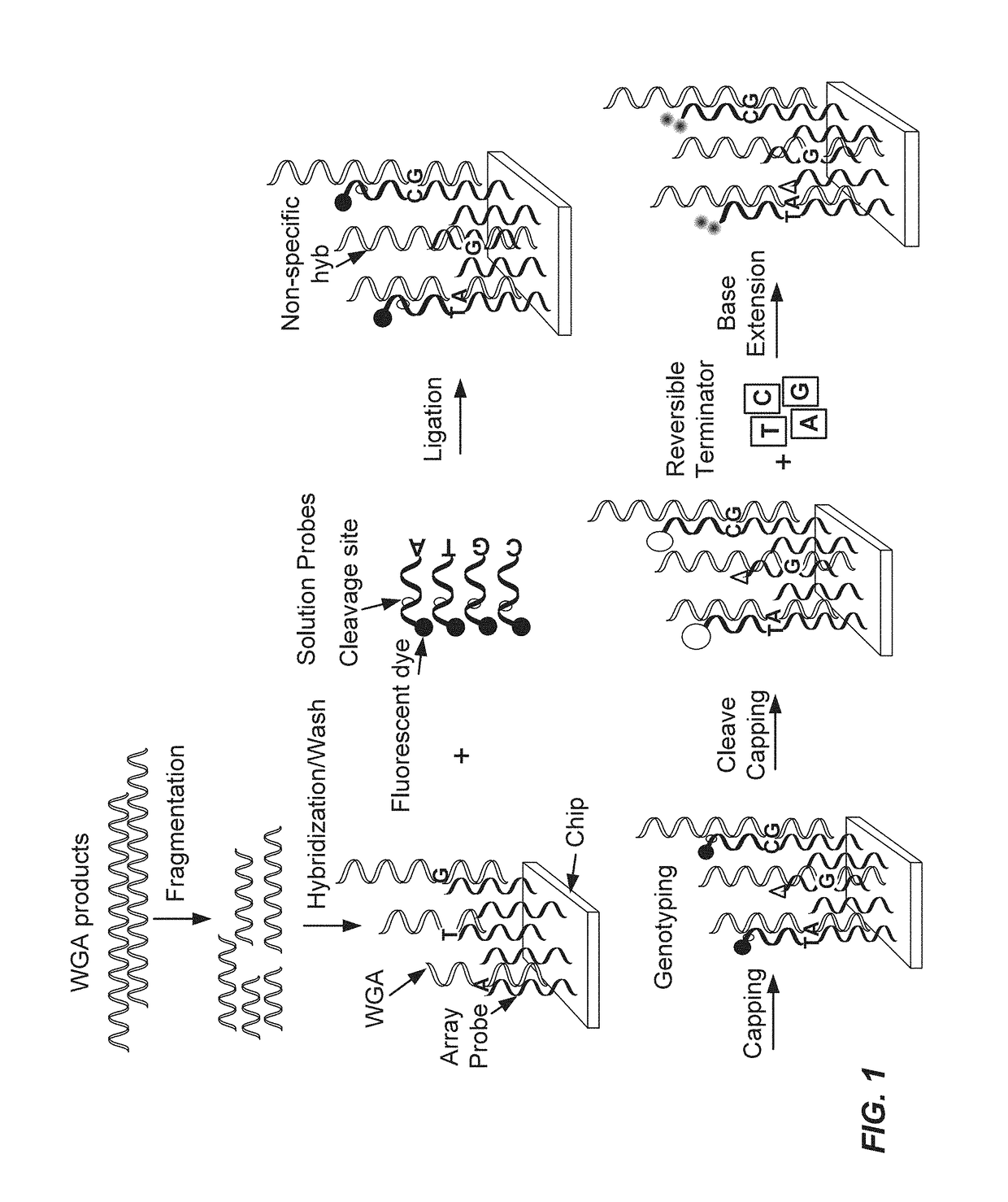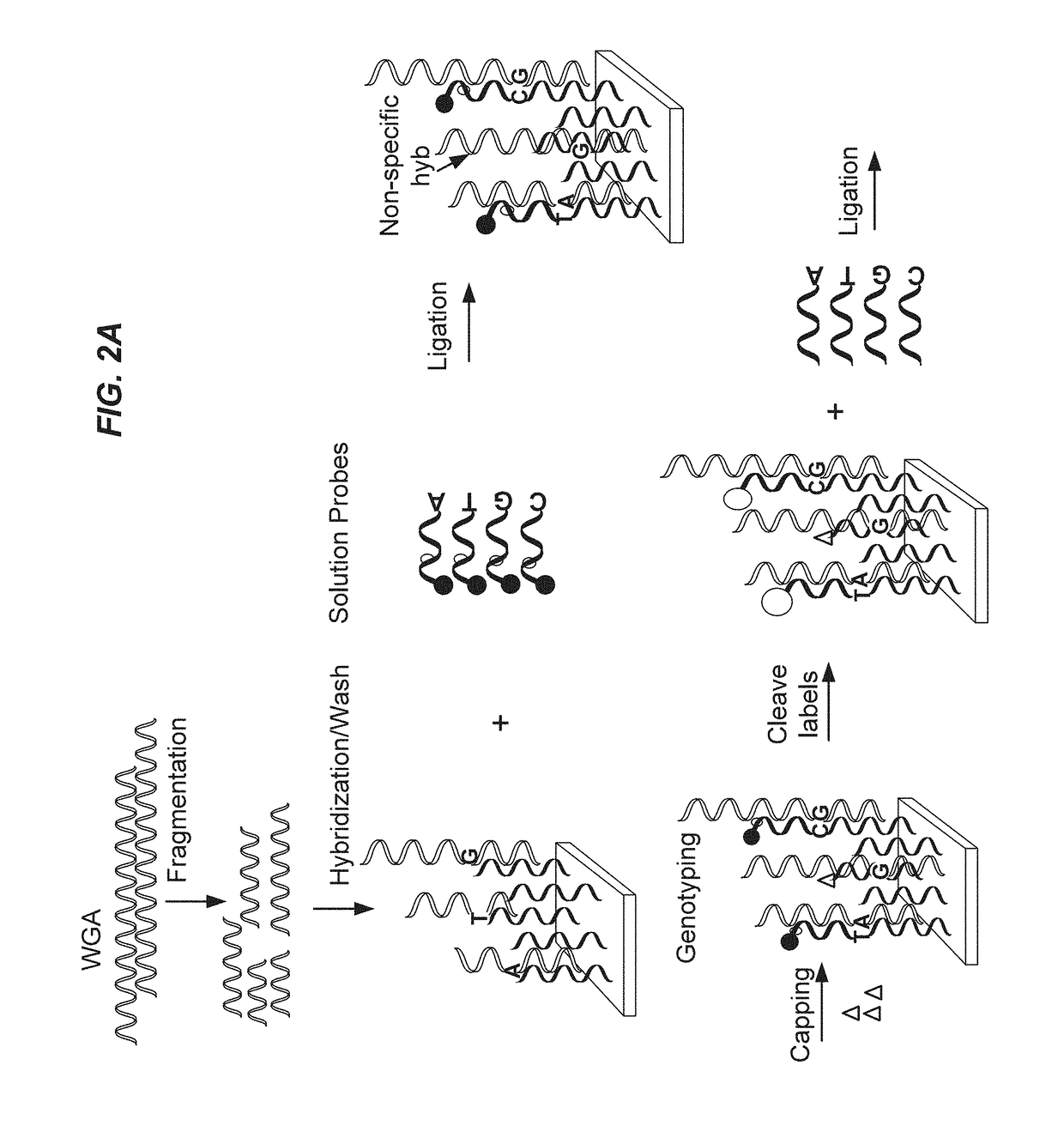Methods of targeted sequencing
a sequencing method and sequencing technology, applied in the field of targeted sequencing, can solve the problems of difficult multiplication of this approach, and insufficient product from ligase detection reaction alone,
- Summary
- Abstract
- Description
- Claims
- Application Information
AI Technical Summary
Benefits of technology
Problems solved by technology
Method used
Image
Examples
example 1
NA Preparation
[0174]Genomic DNA is prepared from the blood of two normal human volunteers, one male and one female, according to standard techniques. Briefly, approximately 12 ml of blood is obtained in EDTA-containing blood collection tubes. Red blood cells are lysed by mixing the blood samples with 4 volumes of lysis buffer (10 mM Tris pH 8.0, 10 mM EDTA). After 10 min on ice with occasional agitation, the suspensions are centrifuged and the supernatants are decanted. The white blood cell pellets are resuspended in 20 ml of lysis buffer, and the above process is repeated. Each cell pellet is then suspended in 15 ml of digestion buffer (50 mM Tris pH 8.0, 5 mM EDTA, 100 mM NaCl, 1% SDS) and 3 mg (0.2 mg / ml) of proteinase K is added. The cells are digested at 37° C. for 5 hours. The digests are extracted twice with equal volumes of phenol, then once with equal volumes of a 1:1 phenol:chloroform mixture and finally once with equal volumes of chloroform, each time centrifuging the mix...
example 2
cific Sequencing
[0177]A DNA chip containing over 10 thousand SNPs, serving as capture probes, was mixed with target polypeptide. A first solution probe was added for hybridizing with the target polypeptide. Different first solution probes were used with a difference in the base to be ligated to the SNP. At a given SNP site, the sample DNA should be a perfect match with a given probe. After a stringent wash, a first run of ligation was conducted. The chip was then washed, stained and scanned. After cleavage, through the addition of RNase, followed by phosphorylation, a second round ligation was conducted, followed by additional washing and scanning. A score, referred to as the call rate, was recorded. The call rate refers to the signal recorded of the ligation event occurring from the specific probe ligation events minus the signal from the reference probe ligation events, divided by total signal of both specific and reference probes combined. The call rate for the first round of lig...
PUM
| Property | Measurement | Unit |
|---|---|---|
| thick | aaaaa | aaaaa |
| diameter | aaaaa | aaaaa |
| temperature | aaaaa | aaaaa |
Abstract
Description
Claims
Application Information
 Login to View More
Login to View More - R&D
- Intellectual Property
- Life Sciences
- Materials
- Tech Scout
- Unparalleled Data Quality
- Higher Quality Content
- 60% Fewer Hallucinations
Browse by: Latest US Patents, China's latest patents, Technical Efficacy Thesaurus, Application Domain, Technology Topic, Popular Technical Reports.
© 2025 PatSnap. All rights reserved.Legal|Privacy policy|Modern Slavery Act Transparency Statement|Sitemap|About US| Contact US: help@patsnap.com



